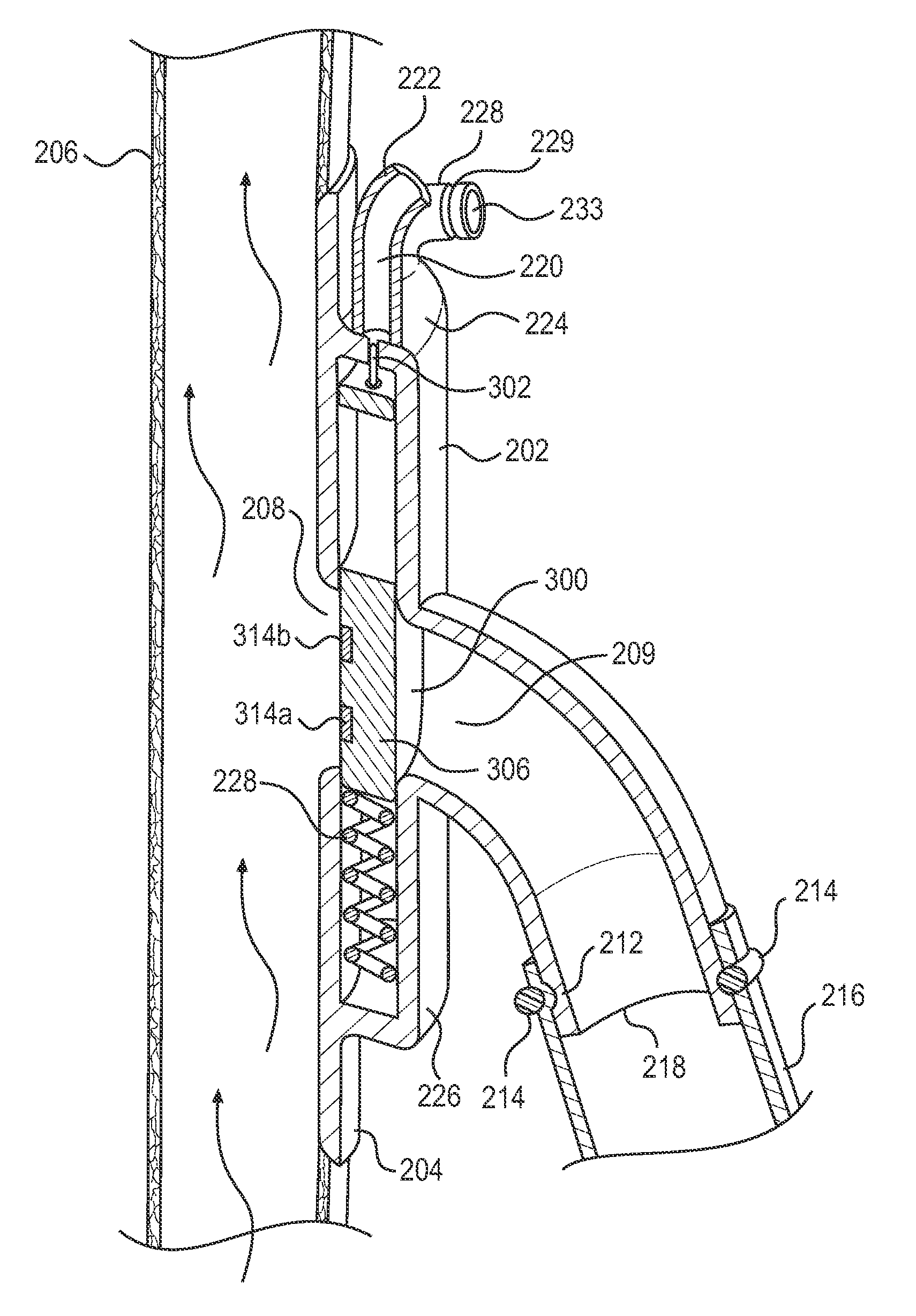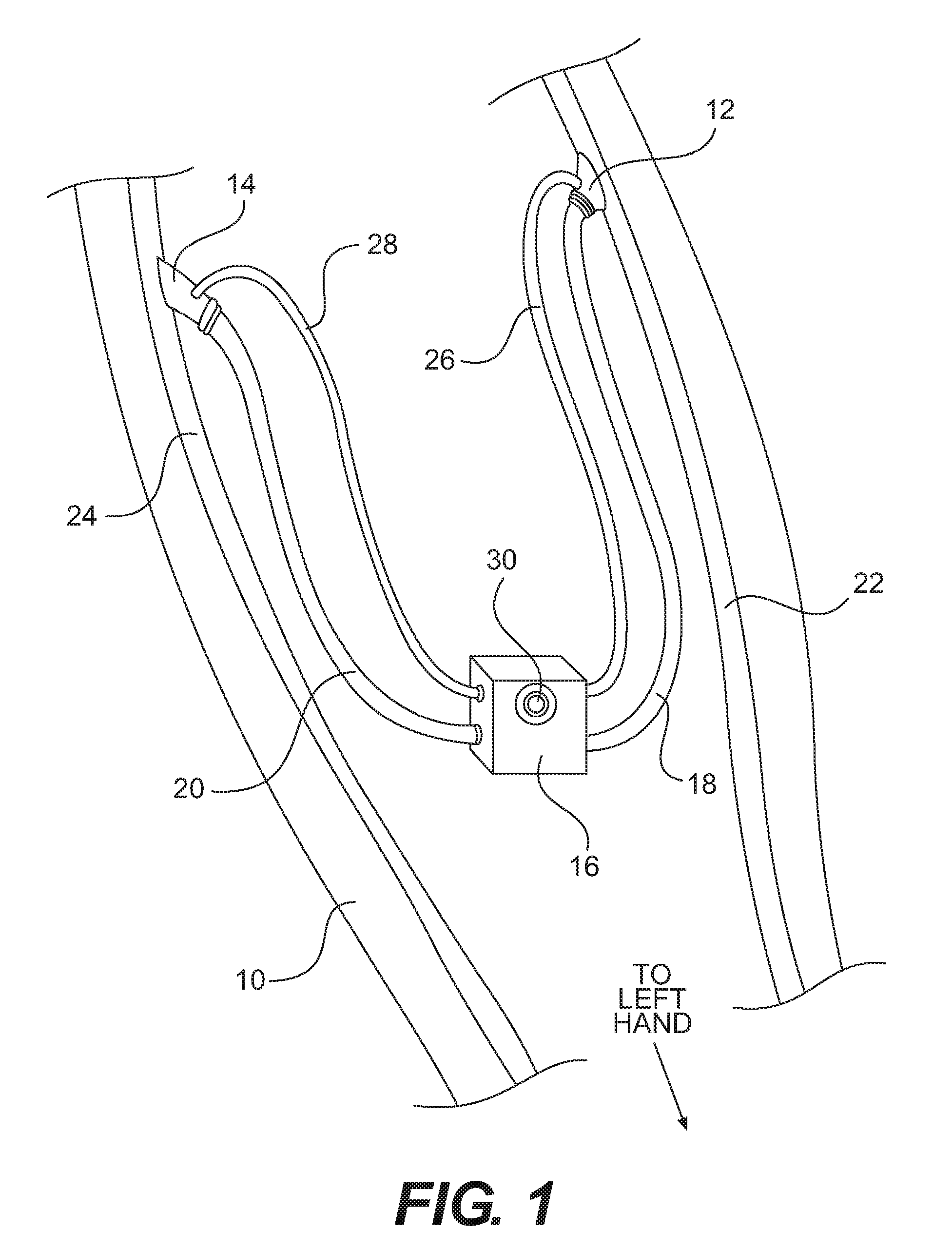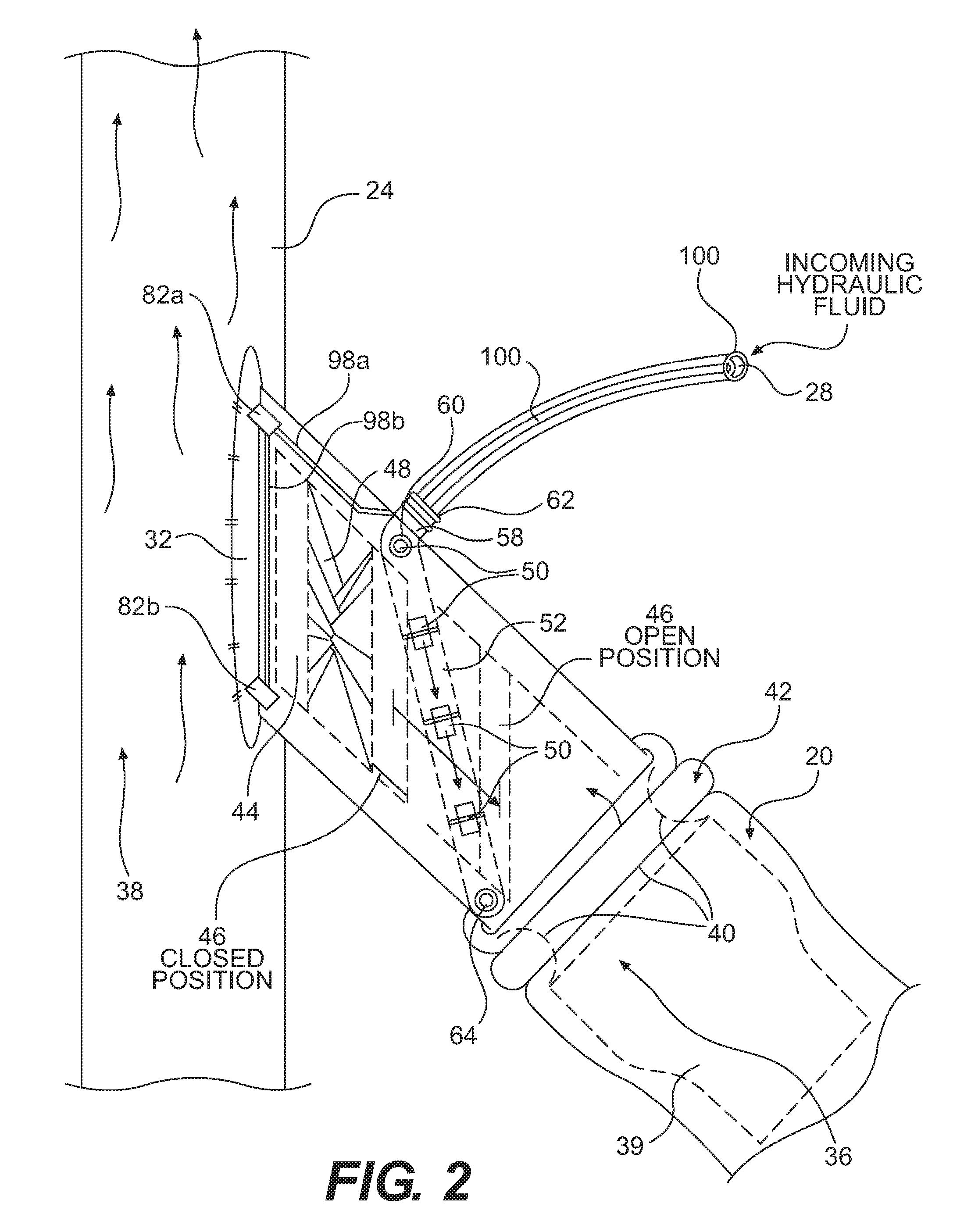Arteriovenous shunt with integrated surveillance system
a shunt and integrated technology, applied in the field of hemodialysis devices and methods, can solve the problems of significant risk of infection and aneurysm, using conventional av shunts, and weakening of vessel walls, so as to increase the rate at which blood is permitted, increase the rate of blood flow, and reduce the effect of blood flow
- Summary
- Abstract
- Description
- Claims
- Application Information
AI Technical Summary
Benefits of technology
Problems solved by technology
Method used
Image
Examples
Embodiment Construction
[0031]The present invention provides an arteriovenous shunt device for establishing hemodialytic angioacess. Devices operating according to a preferred embodiment of the present invention are capable of collecting and storing data concerning its own patency, and transmitting the data to an external receiver for further processing and analysis by medical technicians or practitioners. Some embodiments of the present invention have a modular design that includes at least two flexible shunts and one medial flow control unit. In embodiments having the modular design, the medial flow control unit is relatively easily connected between the two flexible shunts by the vascular surgeon during the implantation procedure. Because this embodiment of the device comprises at least three conjoined pieces instead of one, vascular surgeons have greater flexibility when it is determined during implantation and repair surgery that the overall length and / or arrangement of the shunt device needs to be sh...
PUM
 Login to View More
Login to View More Abstract
Description
Claims
Application Information
 Login to View More
Login to View More - R&D
- Intellectual Property
- Life Sciences
- Materials
- Tech Scout
- Unparalleled Data Quality
- Higher Quality Content
- 60% Fewer Hallucinations
Browse by: Latest US Patents, China's latest patents, Technical Efficacy Thesaurus, Application Domain, Technology Topic, Popular Technical Reports.
© 2025 PatSnap. All rights reserved.Legal|Privacy policy|Modern Slavery Act Transparency Statement|Sitemap|About US| Contact US: help@patsnap.com



